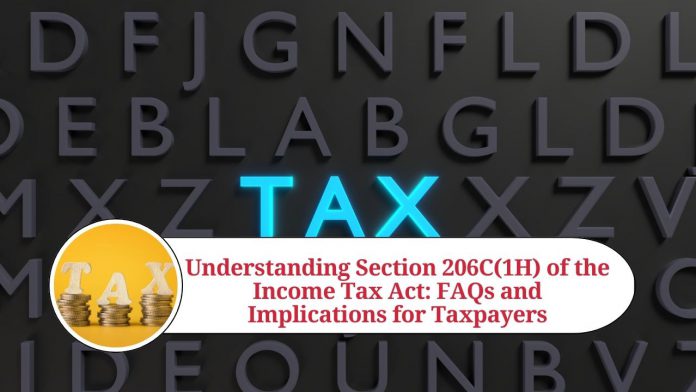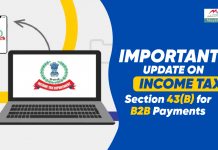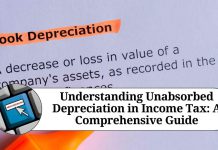Section 206C(1H) of the Income Tax Act: An Overview
The Income Tax Act of India is a comprehensive tax law that governs the taxation of income earned by individuals and entities in the country. Section 206C(1H) is a relatively new provision introduced in the Act that deals with the collection of tax at source from the sale of certain goods. In this blog, we will provide an overview of Section 206C(1H) of the Income Tax Act and its implications for taxpayers.
What is Section 206C(1H) of the Income Tax Act?
Section 206C(1H) of the Income Tax Act requires sellers of certain goods to collect tax at source from the buyers at the time of sale. The tax collected at source is then deposited with the government. The objective of this provision is to widen the tax net and prevent tax evasion.
Which goods are covered under Section 206C(1H)?
Section 206C(1H) applies to the sale of the following goods:
- Alcoholic liquor for human consumption
- Tendu leaves
- Timber obtained under a forest lease
- Timber obtained by any mode other than under a forest lease
- Any other forest produce not being timber or tendu leaves
- Scrap
- Minerals, being coal or lignite or iron ore
Who is liable to collect tax at source under Section 206C(1H)?
The seller of the goods is liable to collect tax at source under Section 206C(1H). The seller must collect the tax at the time of sale of the goods and deposit it with the government within the prescribed time frame.
What is the rate of tax under Section 206C(1H)?
The rate of tax under Section 206C(1H) is 1% of the sale consideration. However, if the buyer does not have a Permanent Account Number (PAN), the rate of tax is increased to 5%.
What are the implications of Section 206C(1H) for taxpayers?
Section 206C(1H) has several implications for taxpayers, including:
- Additional compliance burden: Sellers of the goods covered under this provision must comply with the requirement of collecting tax at source and depositing it with the government within the prescribed time frame.
- Impact on cash flow: The requirement of collecting tax at source may impact the cash flow of small businesses as they may have to pay the tax before receiving the payment from the buyer.
- Increased documentation: Sellers must maintain proper documentation to comply with the provisions of Section 206C(1H), which may lead to increased paperwork and administrative costs.
Conclusion
Section 206C(1H) of the Income Tax Act is a new provision that requires sellers of certain goods to collect tax at source from buyers at the time of sale. The objective of this provision is to widen the tax net and prevent tax evasion. However, the provision also imposes an additional compliance burden on sellers and may impact the cash flow of small businesses. It is important for taxpayers to understand the implications of Section 206C(1H) and comply with its provisions to avoid penalties and other consequences.
Other Related Blogs: Section 144B Income Tax Act
Frequently Asked Questions (FAQs)
Q: Which goods are covered under Section 206C(1H)?
A: Section 206C(1H) applies to the sale of alcoholic liquor for human consumption, tendu leaves, timber obtained under a forest lease, timber obtained by any mode other than under a forest lease, any other forest produce not being timber or tendu leaves, scrap, and minerals, being coal or lignite or iron ore.
Q: Who is liable to collect tax at source under Section 206C(1H)? A: The seller of the goods is liable to collect tax at source under Section 206C(1H).
Q: What is the rate of tax under Section 206C(1H)? A: The rate of tax under Section 206C(1H) is 1% of the sale consideration. However, if the buyer does not have a Permanent Account Number (PAN), the rate of tax is increased to 5%.
Q: What is the objective of Section 206C(1H)? A: The objective of Section 206C(1H) is to widen the tax net and prevent tax evasion.
Q: What are the implications of Section 206C(1H) for taxpayers? A: The implications of Section 206C(1H) for taxpayers include an additional compliance burden, impact on cash flow, and increased documentation.
Q: What are the consequences of non-compliance with Section 206C(1H)? A: Non-compliance with Section 206C(1H) may result in penalties and other consequences, such as prosecution and imprisonment.
Q: How can taxpayers comply with Section 206C(1H)? A: Taxpayers can comply with Section 206C(1H) by collecting tax at source from buyers at the time of sale and depositing it with the government within the prescribed time frame. They must also maintain proper documentation to comply with the provisions of the section.




















